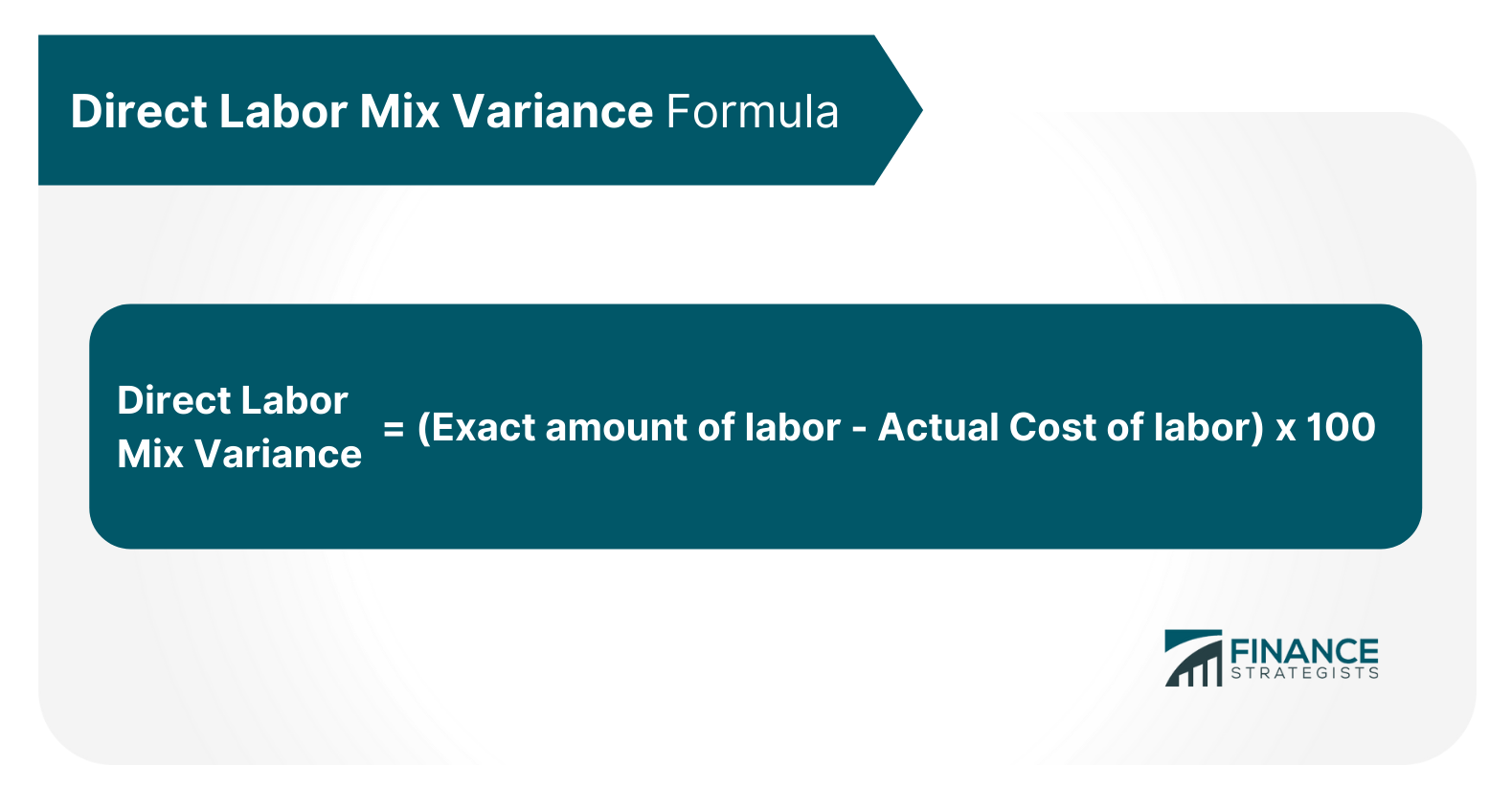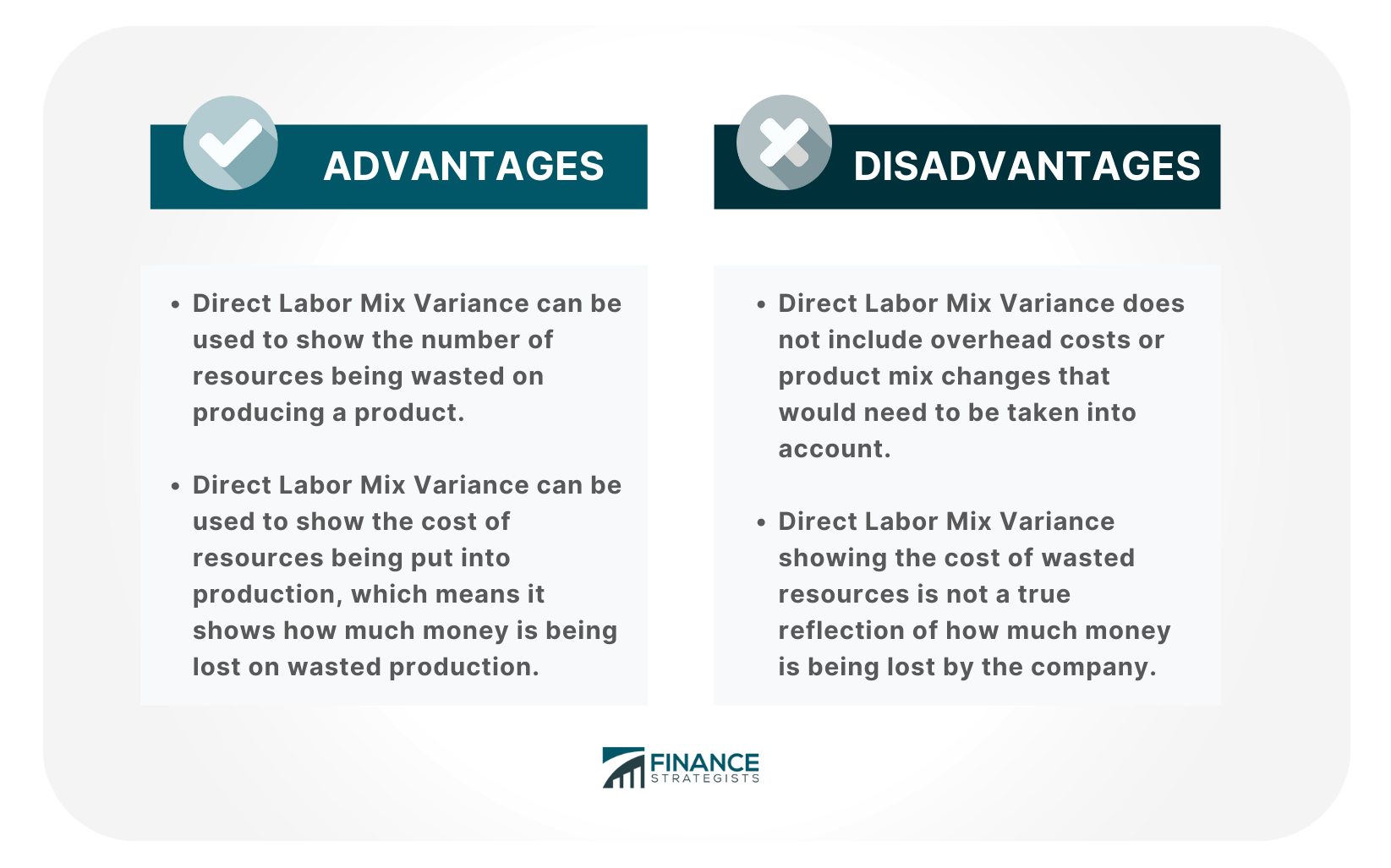Direct Labor Mix Variance is defined as the difference between the exact amount of labor needed to manufacture a product and the actual amount of labor used for that product. Direct Labor Mix Variance can be used to make a product more cost-efficient, less wasteful of resources, and save time during production. It is used to increase the profits of the company by saving money on labor costs. To calculate Direct Labor Mix Variance you must first identify the exact amount of labor it requires to produce a product. Then, for that same product, find the actual cost of the labor used. Direct Labor Mix Variance is found by subtracting the actual from the exact and multiplying by 100 to get %. Many factors can contribute to Direct Labor Mix Variance and can cause a Direct Labor Mix Variance problem. There are several advantages and disadvantages that one must take into consideration with Direct Labor Mix Variance. Direct Labor Mix Variance shows how much production is wasted and can be used as a tool to decrease Direct Labor Mix Variance. There are several ways Direct Labor Mix Variance can be decreased, but these require training and maintenance of equipment and processes to ensure that they keep working efficiently and the workers need to be motivated. The more Direct Labor Mix Variance is decreased, the less wasted resources are on production, and the better chance there is that products will be produced within their optimal amount of time.How to Calculate Direct Labor Mix Variance
The Formula for Direct Labor Mix Variance

Why Is There a Direct Labor Mix Variance?
Advantages and Disadvantages of Direct Labor Mix Variance

The Advantages of Direct Labor Mix Variance Are the Following:
The Disadvantages of Direct Labor Mix Variance Are:
How Do Companies Decrease Direct Labor Mix Variance?
There are many ways to decrease Direct Labor Mix Variance. Here are some steps:
The Bottom Line
Direct Labor Mix Variance FAQs
Direct Labor Mix Variance is the difference between the budgeted labor mix and the actual labor mix used in production, which can lead to an over- or under-utilization of resources.
Direct Labor Mix Variance typically occurs when the actual labor mix used in production is different from what was budgeted or anticipated.
The most common cause of Direct Labor Mix Variance is a change in the staffing requirements for a particular job, such as the introduction of a new type of worker or skill. Other potential causes include changes in technology, raw material costs, and production processes.
Direct Labor Mix Variance is typically calculated by subtracting the actual amount of labor used from the budgeted amount, then dividing the result by the budgeted amount.
Companies can reduce Direct Labor Mix Variance by more accurately predicting labor needs, using flexible staffing solutions, and making use of labor-saving technology. Additionally, it is important to ensure that labor costs are monitored and managed effectively.
True Tamplin is a published author, public speaker, CEO of UpDigital, and founder of Finance Strategists.
True is a Certified Educator in Personal Finance (CEPF®), author of The Handy Financial Ratios Guide, a member of the Society for Advancing Business Editing and Writing, contributes to his financial education site, Finance Strategists, and has spoken to various financial communities such as the CFA Institute, as well as university students like his Alma mater, Biola University, where he received a bachelor of science in business and data analytics.
To learn more about True, visit his personal website or view his author profiles on Amazon, Nasdaq and Forbes.











